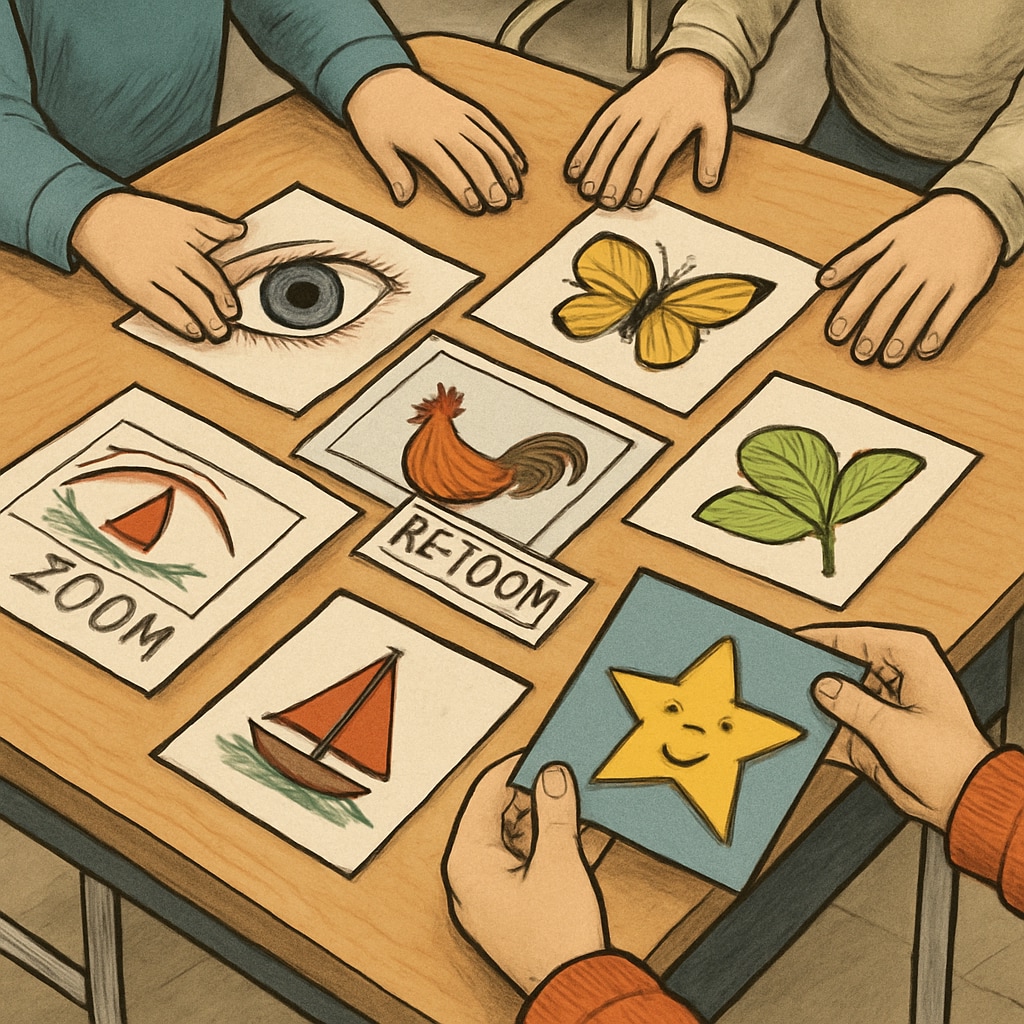Zoom/ReZoom activities, teaching materials, and sequence guides are powerful tools for promoting engagement and collaboration in K12 classrooms. These interactive activities, based on storytelling and sequencing, allow students to explore themes like teamwork, communication, and critical thinking. However, many educators face challenges in executing these activities effectively due to confusion around the sequence of materials. This article provides a systematic guide to help teachers implement Zoom and ReZoom activities seamlessly, maximizing their educational impact.
Understanding Zoom and ReZoom Activities
Zoom and ReZoom are visual storytelling activities designed to develop students’ ability to analyze and interpret information. Zoom, created by Istvan Banyai, features a series of illustrations that zoom out from one image to the next, revealing a larger context with each turn. ReZoom, the sequel, works in reverse, zooming into increasingly detailed layers. Together, these activities encourage participants to think both holistically and analytically.
Teachers can use these materials in various ways, such as introducing concepts like perspective, sequencing, and narrative structure. However, the true value lies in their collaborative implementation, where students work together to organize images logically. To learn more about Istvan Banyai’s work, visit Istvan Banyai on Wikipedia.

Implementation Challenges in the Classroom
Despite their benefits, Zoom and ReZoom activities come with implementation challenges. Educators often struggle with:
- Confusion over the correct sequence of materials.
- Time constraints during lesson planning.
- Balancing group dynamics to ensure participation.
These obstacles can result in ineffective sessions where students fail to grasp the full educational potential of the activity. Addressing these issues requires a structured approach and practical tips tailored to classroom settings.
A Systematic Guide to Sequencing Zoom and ReZoom Activities
To ensure success, teachers should follow a detailed sequence guide when using Zoom and ReZoom materials:
- Prepare Materials: Organize the images in their correct order before introducing them to students. Laminating the illustrations can help preserve them for repeated use.
- Set Objectives: Clearly outline the activity’s goals, such as improving teamwork, communication, or understanding narrative structures.
- Introduce the Activity: Begin by explaining the concept of zooming in and out, using examples from the books to demonstrate how perspective changes.
- Group Students: Divide the class into small groups to encourage collaboration and ensure every student has a chance to participate.
- Distribute Images: Give each group a subset of images and challenge them to determine the correct order by discussing clues and context.
- Facilitate Reflection: After completing the activity, encourage groups to explain their reasoning and discuss how the sequence unfolded.
By following these steps, educators can overcome common challenges and create engaging, meaningful learning experiences for their students.

Benefits of Using Zoom and ReZoom Activities
When implemented effectively, Zoom and ReZoom activities offer numerous benefits:
- Enhanced Communication Skills: Students must articulate their reasoning and listen to others during group discussions.
- Critical Thinking: Analyzing visual clues helps students develop problem-solving abilities.
- Teamwork: Collaboration fosters interpersonal skills and strengthens group dynamics.
- Creative Engagement: The visually stimulating materials capture students’ interest and make learning enjoyable.
For additional information on how storytelling activities can enhance learning, explore storytelling on Britannica.
In conclusion, Zoom and ReZoom activities offer a unique opportunity to enrich K12 education. By addressing implementation challenges with a systematic sequence guide, educators can unlock their full potential, transforming their classrooms into hubs of creativity and collaboration.


